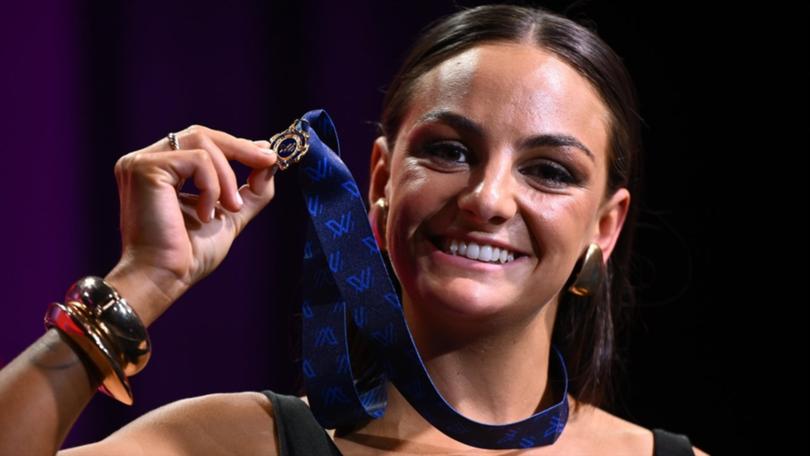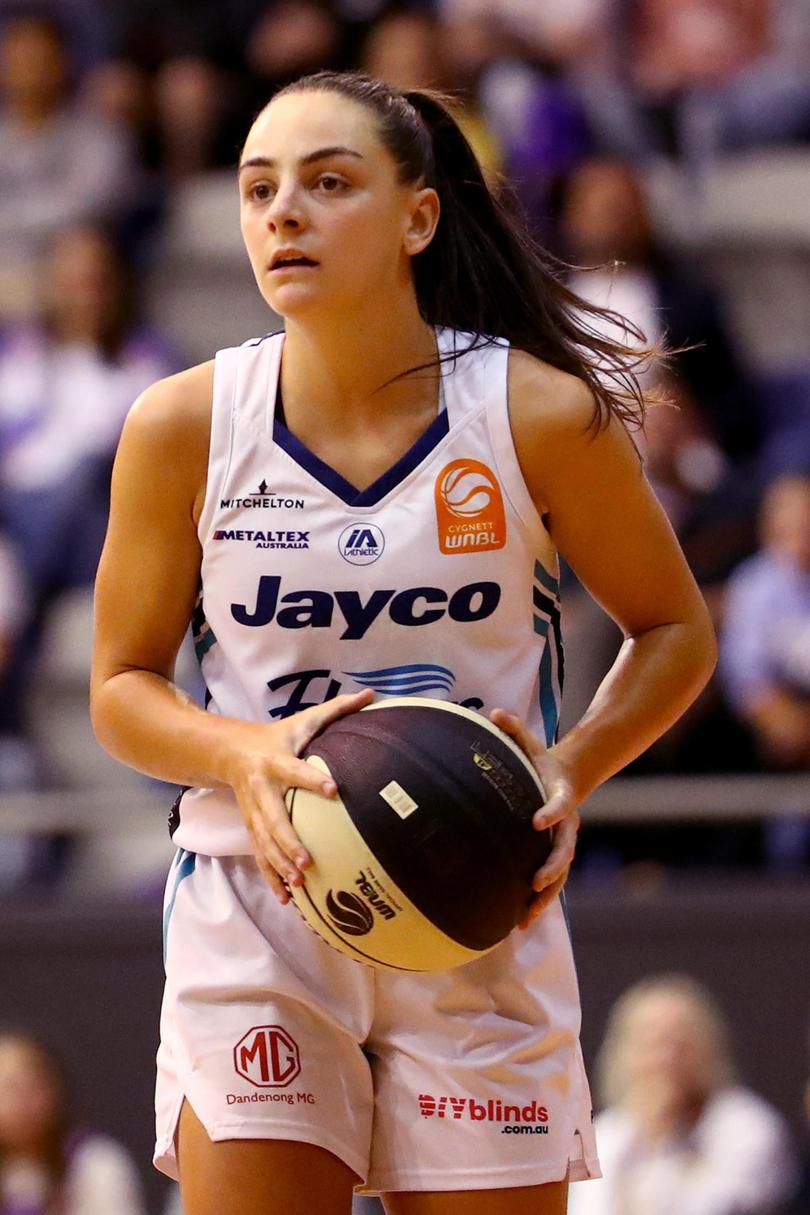Georgie Parker: My love/hate relationship with dual-code athletes amid Mon Conti’s win

Picture this: Lachie Neale wins the Brownlow Medal, and a week later, he is putting on a uniform to play basketball in the NBL.
You just can’t, can you? Well, that’s what Mon Conti just did!
Conti just won the AFLW’s best-and-fairest prize with an emphatic tally of 23 votes out of a possible 30. She is easily one of my favourite players to watch and this win was never a matter of if, but when.
Sign up to The Nightly's newsletters.
Get the first look at the digital newspaper, curated daily stories and breaking headlines delivered to your inbox.
By continuing you agree to our Terms and Privacy Policy.With her best-and-fairest win, coupled with returning to the WNBL’s Melbourne Boomers, she has now been labelled by many as the current best dual-code athlete in the country. Which you’d think is a pretty easy statement given she is a premiership player in both.

There’s been many dual-code athletes before her, and I’m sure there will be more to come, but hopefully not for much longer.
I have a love/hate relationship with it. I love seeing these women get to play sport with more passion and love, like we did as kids, but I hate that it is possible.
I hate the fact none of these sports can offer something that is currently worthwhile choosing. Whether it’s the professional environment that expects a higher standard of commitment, or enough money that you can solely focus on it and it can be your full-time job.
Ultimately, in the early days I didn’t like it, but I understood it. Now, with the pay and the commitment being larger than ever, the understanding is diminishing, particularly with the top-tier players.
It’s a sensitive one to write about, because for years, women playing in these leagues haven’t been professional. The leagues haven’t given them enough support to choose, so the precedent has been set that they’re able to balance both, even if one sport is missing out as the clear second sport for that player.
I think that is changing, so it’s made me ask a lot of questions. Some I think I know the answers to. Others are posed to the athletes or the leagues themselves to ponder.
If this is Mon Conti as a non-full time footy player, imagine how good she is going to be when she is.
The first is this: At what point will we stop seeing women competing in two ‘professional’ sports at the same time? The second, is, whose responsibility is it for this to become a reality?
For me, it’s the sports edition of chicken or the egg. Are the athletes going to band together and say “we will act like professionals, even though the competition and money isn’t there yet, because that is what we are striving for”, or is the league going to start treating them like professionals, even though the competition isn’t there yet and they’re investing to make sure they do?
So then the follow-up questions are these: Who is going to make the first move? What is the catalyst for it? Is it money, or is it time?
I’m a pretty strong believer it isn’t money-based, or we wouldn’t have Olympic athletes dedicating their life to their sport to represent their country. Most Olympic athletes do it for little to no money, and there’s no world in which an up-and-coming swimmer pushing for Paris is spending their hours out of the pool doing handball drills on a football field.
I lived that as a former athlete myself. We struggled financially, yet spending our recovery time at another competitive training session, not a single one of us would dare attempt, nor would I think we would want to. After 12-14 sessions a week, where is the time and energy to do more?
But sure, let’s say that even if physically you’re so elite fatigue isn’t an issue, it’s the potential of injury, missing meetings, and not being at your best and fully committed for your teammates on either side that doesn’t sit well.
So it can’t be money, because we did it for a few hundred bucks and a dream of representing our country, which I guess answers one of those questions.
If it isn’t money, it must be time? For us, our squad demanded the time as we pushed to be a top-ranked nation in the world. Six days a week, we had no time for anything else. But this is where it’s tricky, particularly with footy. Because the AFLW season is so short, there is a lot of time on the other side of the season, so how do we fill that up if not for playing another sport, like the men did in the 1980s?
For me it’s currently sitting in the same grey area as the men in their off-season. Sure, they can technically do what they want in their holidays, but just because you can, doesn’t mean you should.
The off-season is when you see the top band of players elevate, and dedicate their time away from the club to being better and coming back at a higher standard than they left, and conversely, it’s where you ween out the ones who aren’t made out for the cut-throat nature of elite sport.
So just because these women can play another sport on the other side, should they? That one I can’t answer, and I don’t think it’s fair for me to even pass judgement on it either, because until the season is longer, and structure can be offered for longer than six-month blocks, this will be the norm as they find balance in their life.

Even with the CBA being as good as it is, and in four years when the bottom-paid players in the AFLW are on essentially fully time wages, it’s still not offering enough time, and I think time is the key to this.
And you know what, maybe this balance is what the men are missing? Maybe if they got to shoot some competitive hoops on the other side of the season, they’d be a little happier?
Maybe this article is all in vain and the men could learn from the women rather than the other way around. It’s a lot of questions, and a lot of wishing and hoping for what essentially is the crux of this piece: Equality in investment. And that investment goes both ways.
So Mon might have started this conversation in my mind here, but she hasn’t done anything wrong. I just wish it wasn’t possible!
She said herself that she has her balance right now, but isn’t sure how long she can do both for, and, for footy’s sake, I hope it’s not for much longer. Because if this is Mon Conti as a non-full time footy player, imagine how good she is going to be when she is.
